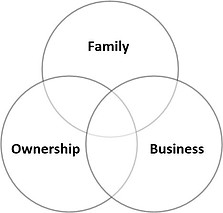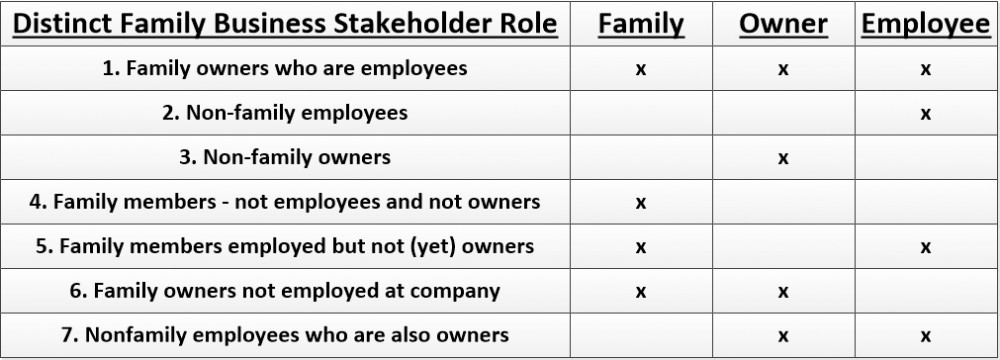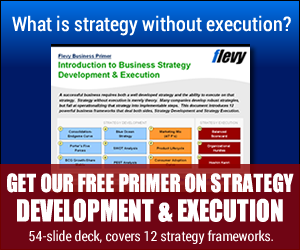While large organizations have complex stakeholder relationships, smaller – sometimes very small – family businesses can have a deceivingly complex web of stakeholder relationships.
This post explores the nuances of those relationships for project managers working on projects in, or involving, family enterprises. The resulting stakeholder management matrix is quite different from the standard matrix in a public company or public sector.
Stakeholder Relationships in Family Businesses
 In a public company or public sector organization, there are generally well-defined roles and types of organizational structures. Typical roles might include Department Manager, Division Director, Technical Lead, Marketing VP, Sales Manager, Logistics Coordinator…and so on.
In a public company or public sector organization, there are generally well-defined roles and types of organizational structures. Typical roles might include Department Manager, Division Director, Technical Lead, Marketing VP, Sales Manager, Logistics Coordinator…and so on.
While those relationships revolve around a person’s functional responsibilities within the organization, it gets more complicated in family business situations. Whereas individuals working in public companies or the public sector usually have a big separation between their work life – the Business circle at right – and other aspects of their lives, that is not so much the case in a family business.
The complexity in family businesses is that they do not operate solely based on structural business relationships. By contrast, they operate with heavy influence by other areas of life – like Family and Ownership in the diagram – that usually do not touch public company or public sector employees.
Consider the forces around the three realms of human activity shown in the diagram – describing the elements of the so called “Three-circle Model” developed in the 1980s by Harvard Business School professor Renato Tagiuri and John Davis:
- Family – Being a family member matters – and business decisions often intersect with family matters. It will affect the relationships with other stakeholders, and even the power of that individual to influence or make decisions.
- Business – Working in the business or outside the business changes the perspective and vested interest of a person. Some stakeholders care deeply about the business, for financial as well as many other non-financial reasons.
- Ownership – Ownership in the business will absolutely affect an individual’s perspective on the business, whether they work in the business or not, and whether they are a family member or not.
The interesting thing about the three factors is that they manifest themselves differently in every family business situation. In some situations, the three factors are largely separated and barely intersect. This can be a healthy situation in reducing family-business conflict, but also can reduce some heart felt commitment that often is the strength of family businesses.
At the other end of the spectrum, some family businesses have extreme overlap across all three factors. This can be a difficult situation in that the lines between business and personal are blurred, and business decisions are usually overly influenced by family concerns.
These three factors illustrate the complexity of stakeholder relationships in family businesses. It’s not just about business interests anymore; it’s family concerns and personal financial interests that also matter much more than you find in public companies and public sector organizations.
A System of Relationships
To understand the complexities in family businesses further, consider the following common factors to consider in family businesses:
- Sameness – Cultural influences are a commonality, but the results will be different – for example, the eldest son taking over the business – depending on the culture. The maturity of the family business ownership – very different from stages of development of non-family enterprises – will also be a factor, usually manifested in one of these more common ownership configurations such as a commanding owner in control, sibling partners, and cousin consortiums.
- Mutuality – There are always major issues that require a collaborative approach to arrive at a consensus. How does the business do that? Does the family avoid it, confront it, or embrace it? Thinking about how ‘mutuality’ manifests itself in the business gives important signals about potential challenges ahead on a project.
- Competing Interests – In the next section, the post explores more on different interests depending upon role. Gaining insights on how the business evolves in the presence of competing interests gives clues as to how to handle stakeholders on projects, and what risks might evolve.
- Unintended Consequences – Because family businesses sit at the overlap of family, business, and ownership aspects of life, conflicts inevitably will occur. For example, decisions about whether to invest in a large project or give shareholder distributions may cause friction among family members, depending upon their personal interest.
The next section pulls together some of these considerations and identifies specific roles that stakeholders can play in a family business – roles completely separate and distinct from functional business roles.
A Stakeholder Management Matrix in a Family Business
Circling back to that idea of who the functional stakeholders are – the marketing director, the sales manager, the Chief Financial Officer… – in an organization, a project manager must also consider the unique group of stakeholders that exist exclusively in family businesses. These unique roles are illustrated in the chart below.

These unique roles are all defined by whether the person is a family member, employee, and/or owner. If you are managing a project in a family business, here are some things to consider for each of these roles:
- Family owners who are employees – see the company perform well, increase in value, and perform work that is meaningful in the community
- Non-family employees – advance their career, earn a fair compensation, and protect their job and position
- Non-family owners – increase the value of the company and earn distributions from income, and feel comfortable with what the company does in and for the community
- Family members who are not employees and not owners – protect their particular family unit from harm, and have access to employment and even ownership opportunities for family members, such as spouse and children
- Family members employed but not (yet) owners – build a strong career, make an impact, and secure the potential for ownership at some point
- Family owners not employed at company – increase the value of the company, earn distributions from income, and see the company as a good citizen in the community positioned well for the future
- Non-family employees who are also owners – build a solid career, secure their job, enjoy fair compensation, increase the value of the company, and earn distributions
The markings in the chart for Family, Owner, and Employee show that each of these roles is completely unique in terms of interest simply because of posture as a family member, employee, and/or owner.
—————————————-
I recommend these PM templates (paid link):
—————————————-
Reconciling Project Management With Unique Stakeholders
 Typical stakeholder management still exists. For example, if you are implementing a new payroll system, you will need to engage the HR, administrative, financial, and other functional stakeholders responsible for that area.
Typical stakeholder management still exists. For example, if you are implementing a new payroll system, you will need to engage the HR, administrative, financial, and other functional stakeholders responsible for that area.
However, that is not all. You will have to pay close attention to the additional stakeholders outlined above, based on their role as a family member, owner, and/or employee. It will be helpful to start out with the Stakeholder Management Matrix template as shown above, but you will need to fill in who occupies that various roles.
This will require some sensitivity – much more so that for other stakeholders. You will need to consider who might fill those roles, and how they might feel about your project. It will require getting to know stakeholders and others in the company much more deeply – not just on a business basis – than you normally would. It will be helpful for you to know more about stakeholders personally, to understand the ownership structure – and who are the owners – in the business. And it will be helpful for you to understand the overlaps between the functional stakeholders and the family business stakeholder roles. For example, in the payroll system project, you need to not only consider the functional roles, but who among those stakeholders is also a family member, an owner, and/or an employee.
Adding the family business stakeholder management matrix to your stakeholder planning will help you to manage risks and increase your chances of success, and even enable you to be proactive on potential issues before they arise.
Conclusion
Family businesses have unique characteristics that make stakeholder management a more complex challenge than in most other situations. If you consider the roles in the family business stakeholder management matrix in addition to functional business roles, you will set yourself up for success on these projects.
—————————————-
I recommend these strategy resources (paid link):
—————————————-

